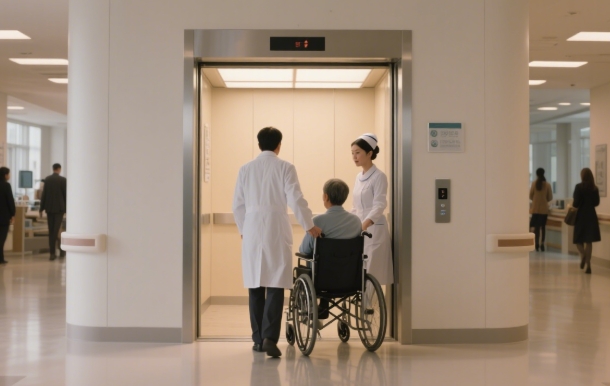When it comes to purchasing hospital lifts, understanding the factors that influence their price is crucial. This article will delve into the key elements that affect the cost of hospital lifts, providing valuable insights for B2B procurement professionals.
The type of hospital lift significantly impacts its price. There are various types of hospital lifts, including bed lifts, stretcher lifts, and passenger lifts. Each type has different specifications and functionalities, which contribute to the overall cost. For instance, bed lifts, designed to accommodate hospital beds, are generally more expensive due to their larger size and higher weight capacity. Conversely, passenger lifts, while still essential, may be less costly as they are designed for standard passenger use. Therefore, understanding the specific needs of your facility is essential when considering the type of lift to purchase.
Load capacity and size are critical factors that influence hospital lift price. Lifts with higher load capacities and larger sizes are typically more expensive. This is because they require more robust materials and advanced engineering to ensure safety and reliability. For example, a lift designed to carry heavy medical equipment or multiple patients simultaneously will cost more than a standard passenger lift. Additionally, larger lifts may require more space for installation, which can also add to the overall cost. Thus, it is important to assess the load capacity and size requirements of your hospital to make an informed decision.

Technological features play a significant role in determining the price of hospital lifts. Modern lifts often come equipped with advanced features such as touchless controls, remote monitoring, and energy-efficient systems. These features, while enhancing the functionality and convenience of the lift, also contribute to higher costs. For instance, touchless controls can reduce the risk of infection, which is particularly important in a hospital setting. Remote monitoring allows for real-time tracking of lift performance, ensuring timely maintenance and reducing downtime. Energy-efficient systems, although initially more expensive, can lead to long-term hospital lift cost savings by reducing energy consumption. Therefore, investing in technologically advanced lifts can be beneficial in the long run.
Customization and design options can also affect the price of hospital lifts. Custom lifts, tailored to meet specific requirements, are generally more expensive than standard models. Customization can include features such as specialized interiors, custom dimensions, and unique aesthetic designs. For example, a lift designed to match the interior decor of a hospital or to fit into a uniquely shaped shaft will cost more due to the additional design and manufacturing efforts required. Additionally, lifts with enhanced safety features, such as anti-bacterial surfaces and advanced emergency systems, may also come at a higher price. Therefore, while customization can provide significant benefits, it is important to balance these with budget considerations.
Installation and maintenance costs are important factors to consider when evaluating hospital lift prices. The complexity of the installation process can vary depending on the type and size of the lift, as well as the existing infrastructure of the hospital. For instance, installing a large bed lift in an older building may require significant modifications, leading to higher installation costs. Additionally, regular maintenance is essential to ensure the safe and efficient operation of the lift. Maintenance costs can include routine inspections, part replacements, and emergency repairs. Therefore, it is important to factor in both installation and ongoing maintenance costs when budgeting for a hospital lift.
Regulatory compliance and safety standards are crucial considerations that can impact the price of hospital lifts. Lifts used in hospitals must adhere to strict safety regulations and standards to ensure the well-being of patients and staff. Compliance with these regulations often requires additional features and certifications, which can increase the overall cost. For example, lifts must be equipped with emergency communication systems, fire-resistant materials, and fail-safe mechanisms. Additionally, obtaining the necessary certifications and approvals can involve additional costs. Therefore, ensuring that the lift meets all regulatory requirements is essential, even if it means a higher initial investment.
| Factor | Impact on Price |
|---|---|
| Type of Hospital Lift | Different types have varying specifications and costs. |
| Load Capacity and Size | Higher capacity and larger size increase the cost. |
| Technological Features | Advanced features add to the price but offer long-term benefits. |
| Customization and Design | Custom options and unique designs are more expensive. |
| Installation and Maintenance | Complex installations and regular maintenance add to the overall cost. |
| Regulatory Compliance | Adhering to safety standards and obtaining certifications can increase the cost. |
In conclusion, understanding the factors that influence hospital lift prices is essential for making informed procurement decisions. By considering the type of lift, load capacity, technological features, customization options, installation and maintenance costs, and regulatory compliance, you can ensure that you select the best lift for your hospital’s needs while staying within budget.